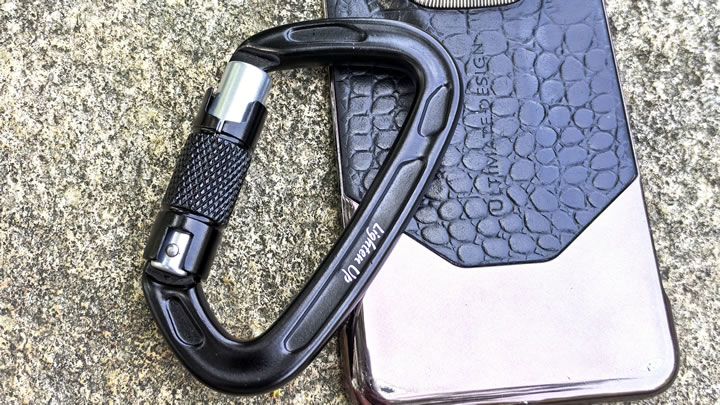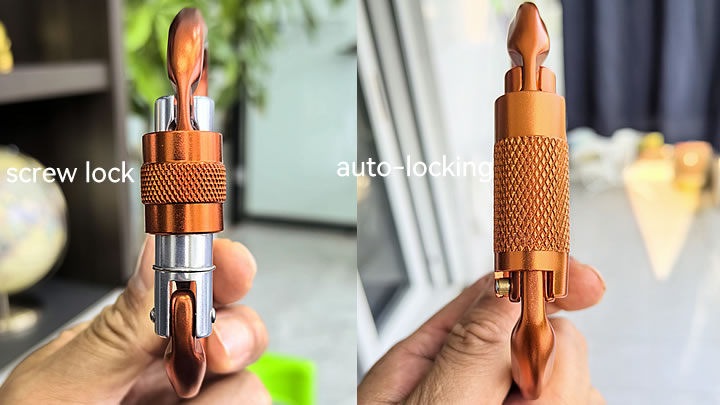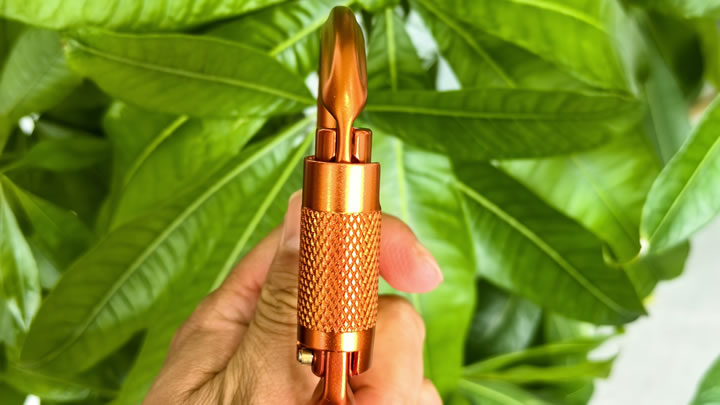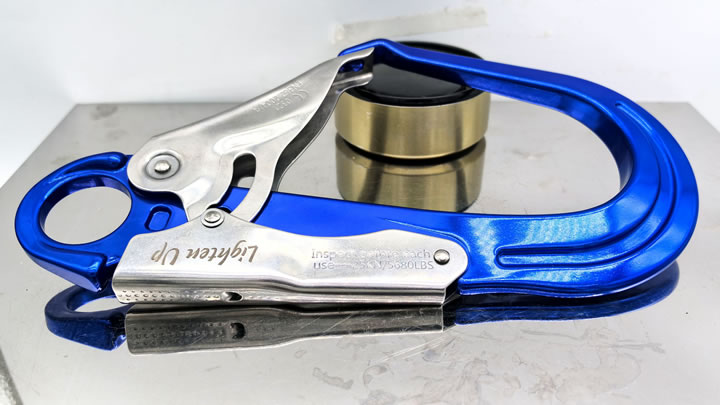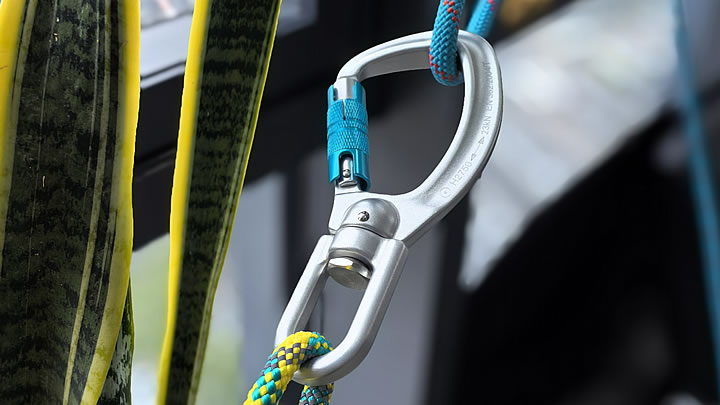Carabiner Hook: Screw Lock vs. Auto-Locking Mechanism
When your safety depends on a carabiner staying closed, the locking mechanism becomes the most critical feature. For belaying, building anchors, or any life-critical connection, a locking carabiner is non-negotiable. But within this category, a fundamental choice arises: the manual, time-tested screw lock or the swift, modern auto-locking mechanism. Understanding the difference is key to selecting the right tool for your discipline and managing your safety effectively.
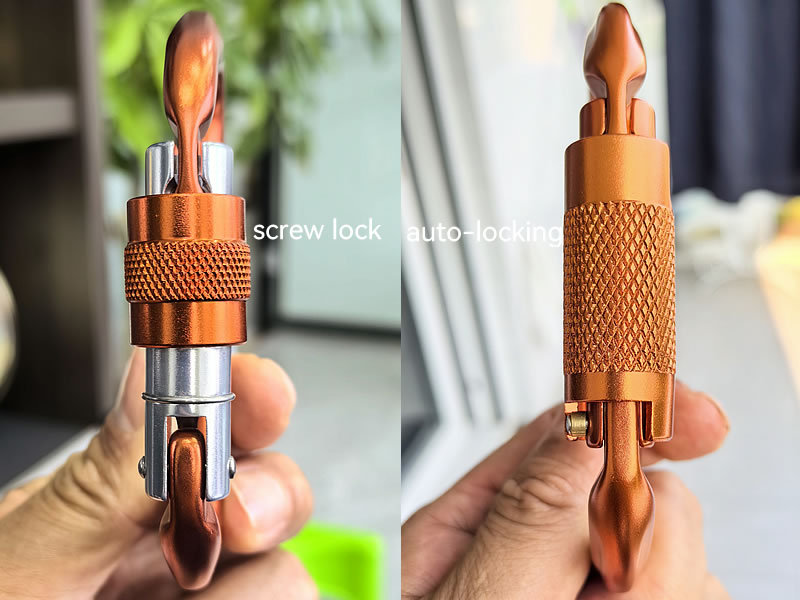
This article will break down the operation, advantages, and drawbacks of each system to help you make an informed decision.
The Screw Lock Mechanism: Deliberate and Simple
How It Works:
A screw lock carabiner features a threaded sleeve that rotates around the carabiner's body. To lock it, you must manually twist this sleeve down until it completely covers the gate opening, preventing the gate from being pushed open. To unlock it, you screw the sleeve back up.
Advantages:
- Simplicity and Reliability: The mechanism is fundamentally simple with very few moving parts. There is little to go wrong mechanically, making it highly reliable.
- Tactile and Visual Confirmation: The act of screwing the sleeve provides a clear, tactile confirmation that it is locked. A visual inspection is also straightforward—if you can see the gate, it's not fully locked.
- Durability in Harsh Conditions: Screw locks are generally less prone to being jammed by mud, ice, or sand. While debris can make screwing difficult, it rarely permanently jams the mechanism in the same way it can with complex auto-locking systems.
- Cost-Effective: They are typically less expensive to manufacture and purchase.
Disadvantages:
- Human Error (The Greatest Risk): The primary failure mode of a screw lock is user negligence. In a moment of haste or distraction, a climber may forget to screw the sleeve all the way down, leaving the carabiner effectively non-locking.
- Slower Operation: The manual process of screwing the lock open and closed takes more time, which can be a disadvantage when making multiple adjustments or in situations requiring speed.
The Auto-Locking Mechanism: Swift and Secure
How It Works:
Auto-locking carabiners use an internal spring-loaded mechanism that automatically engages the lock when the gate closes. Unlocking requires a deliberate, often two-step action, such as twisting and then pulling the gate open. Common types include twist-lock (e.g., Petzl Ball-Lock, Black Diamond Magnetron) and push-button designs.
Advantages:
- Eliminates User Error: This is their biggest benefit. Because they lock automatically, there is no risk of forgetting to lock them. This provides a significant safety advantage, especially for beginners or in high-stress situations.
- Faster and More Efficient: The one-handed, automatic operation allows for much quicker clipping and unclipping. This is highly valued by climbers making frequent adjustments at belay stations or by rescue technicians.
- Positive Engagement: The distinct "click" and the specific action required to open them provide clear auditory and tactile feedback that they are securely locked.
Disadvantages:
- Mechanical Complexity: With more moving parts (springs, balls, sleeves) comes a higher potential for mechanical failure. A worn-out spring or a jammed component can render the carabiner unusable.
- Vulnerability to Debris: The intricate mechanisms can be susceptible to jamming if contaminated with dirt, sand, or ice. This requires more diligent maintenance and inspection.
- Higher Cost: The complex engineering makes them more expensive than their screw-lock counterparts.
- Potential for "False Lock": In rare cases, if the gate is closed with an object obstructing the nose, the mechanism might not engage fully, creating a false sense of security.
Choosing the Right Tool for the Task
The best choice often depends on your primary activity:
- Choose a Screw Lock for:General Mountaineering and Ice Climbing: Where freezing conditions and debris are concerns, the simpler mechanism is often more reliable.Situations Requiring Deliberate Action: Where taking a moment to manually lock the carabiner reinforces a careful, methodical process.Budget-Conscious Buyers or Beginners learning the fundamentals.
- Choose an Auto-Locker for:Sport Climbing and Gym Climbing: Where speed at belay stations is valued and conditions are clean.Alpine Climbing (in good conditions): Where reducing weight and saving time on complex anchors is crucial.Rescue and Industrial Rope Access: Where speed, efficiency, and the elimination of human error are paramount.Any Climber Who Values the "Set-and-Forget" Security.
Conclusion: A Matter of Preference and Context
There is no single "best" locking mechanism; there is only the best tool for the situation and the user. The screw lock offers rugged simplicity and is a battle-tested workhorse, but it demands discipline from its user. The auto-locking mechanism provides a sophisticated, error-proofing layer of safety and speed but requires more careful maintenance and trust in its mechanical complexity.
Whichever you choose, the golden rule remains the same: always perform a visual and physical check to confirm the lock is fully engaged before weighting the carabiner. Your safety system is only as strong as your attention to detail, regardless of the technology in your hand.

